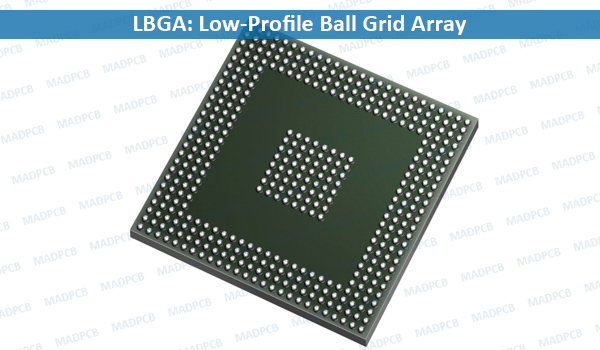What’s LBGA?
LBGA (Low-Profile Ball Grid Array) is a surface mount IC package with a low profile that uses solder balls to attach to the Printed Circuit Board (PCB) or BGA socket. The Low-Profile refers to the height of the body of the component, meaning that the package in this configuration is not as thick or high as a normal BGA package. So, an LBGA takes up the same physical space on a PCB as a BGA (of the same size), but is not as high off the circuit board.
There are a number of different ball patterns. The BGA package has two distinct ball patterns, while the BGA IC contains a full Ball Grid Array. Another example of a BGA IC is an AMD Geode Processor IC using a BGA package, having a different BGA pattern. Additional IC Package styles used by ICs. Resistor Networks are also available in a BGA package.
Because an LBGA refers to the components height off the printed wiring board, an LBGA could be either a Plastic BGA or a Ceramic BGA, and of course also just be called a BGA. So, like so many of these package terms, one package style could also be called any of a number of other styles all referring to the same package. But in general a Low-Profile BGA should be physically smaller than a normal BGA.
Many topics in this section provide examples of ICs using a particular package style. However, in this case, it does not expect any particular function to stay in one particular package type for long. While a function that started in a TO-92, for example, might still be offered in that same TO-92 package years later. For example, a processor offered in an LBGA package might only be offered for a few years before it is rendered obsolete by the next version.

